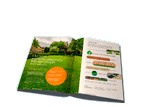The Facts on Wildlife in Cottage gardens
Posted on 18/04/2024
Cottage gardens are a beautiful sight to behold - overflowing with colorful flowers, herbs, and vegetables, they are a paradise for garden lovers. But did you know that these traditional English gardens are also a haven for wildlife? With their naturalistic design, cottage gardens attract a wide variety of creatures, from bees and butterflies to birds and small mammals. In this article, we will explore the fascinating facts about wildlife in cottage gardens and how you can create your own wildlife-friendly garden.
The Role of Cottage Gardens in Wildlife Conservation
Cottage gardens have been around since the 18th century when they were popular among rural homeowners as a way to grow food and flowers in a limited space. These gardens were typically filled with native plants, providing a safe habitat for local wildlife. Today, with the ever-increasing urbanization and loss of natural habitats, cottage gardens play an even more important role in supporting wildlife populations.
The biodiversity found in cottage gardens is crucial for the survival of many species that have lost their natural habitats due to human activities. By creating a mini ecosystem in your backyard, you are not only providing food and shelter for local animals but also helping to preserve their dwindling populations.

Attracting Wildlife to Your Cottage Garden
Cottage gardens are designed to be attractive to both humans and wildlife. Here are some tips on how you can make your garden more welcoming for wild creatures:
- Plant a variety of native plants: Native plants are adapted to the local climate and have evolved with local wildlife, making them an excellent source of food for insects, birds, and other creatures.
- Leave some areas wild: Instead of having a perfectly manicured lawn, leave some areas of your garden wild. This provides cover for small animals like hedgehogs and allows wildflowers to grow.
- Include a water feature: A shallow birdbath or pond can attract a variety of birds, insects, and amphibians to your garden.
- Plant flowers for all seasons: By planting a mix of early-flowering and late-flowering plants, you can provide food for wildlife throughout the year.
- Avoid using pesticides: Pesticides not only harm the insects that feed on them but also the animals that eat those insects. Instead, use natural pest control methods like companion planting and organic fertilizers.
The Pros and Cons of Wildlife in Cottage Gardens
Pros:
- Attracts beneficial insects: Bees, butterflies, and other pollinators are essential for the growth and reproduction of plants. By attracting these creatures to your garden, you are helping to pollinate flowers and allow fruits and vegetables to grow.
- Encourages natural pest control: Insects like ladybugs and lacewings are natural predators of pests like aphids. By creating a habitat for them in your garden, you can reduce the need for harmful pesticides.
- Provides a tranquil environment: The presence of wildlife in your garden can create a peaceful atmosphere and bring joy to your daily life.
Cons:
- Possible damage to plants: Some animals may feed on your flowers or vegetables. To prevent this, consider using fencing or netting around vulnerable plants.
- Attracts unwanted animals: Depending on where you live, certain wildlife like deer or rabbits may be drawn to your garden. This could potentially cause damage to your plants or create a nuisance in your yard.

Takeaways
Creating a wildlife-friendly cottage garden is not only beneficial for local fauna but also for the environment as a whole. Here are some key points to remember:
- Native plants are best for attracting local wildlife.
- A mix of wild and cultivated areas creates a balanced ecosystem.
- Avoid using pesticides and opt for natural pest control methods.
- Do some research on what types of wildlife may be attracted to your garden and take necessary precautions.
Conclusion
Cottage gardens are not just pretty landscapes - they are an important part of wildlife conservation. By incorporating these naturalistic gardens in our urban spaces, we can help to support the survival of many species. With the right combination of plants and a few simple steps, you can create your own little wildlife haven. So why not add some wild beauty to your cottage garden today?






 Certified and experienced landscapers
Certified and experienced landscapers



 Get a Quote
Get a Quote